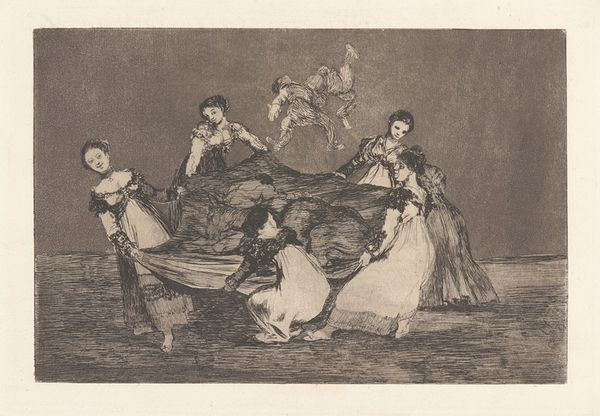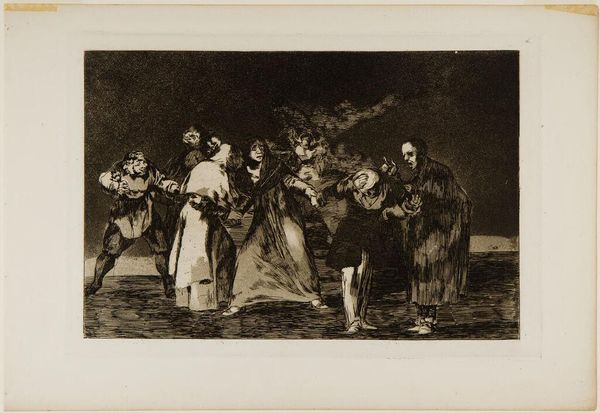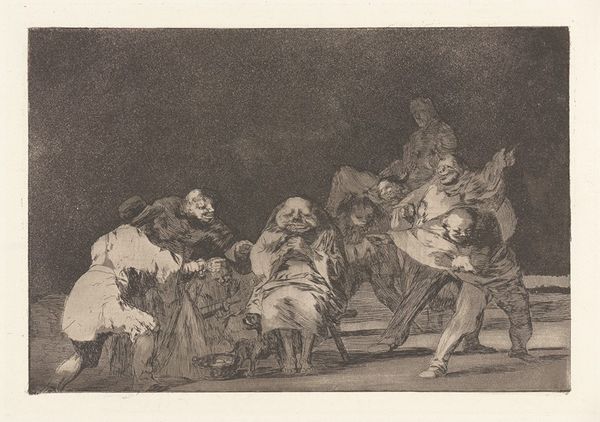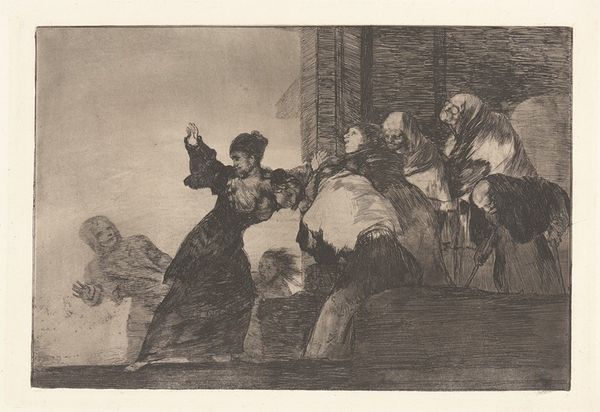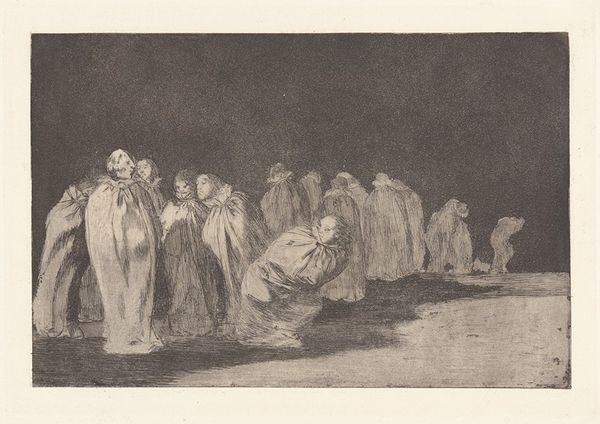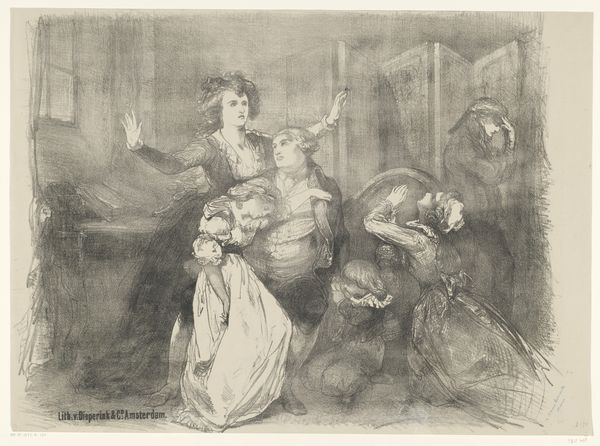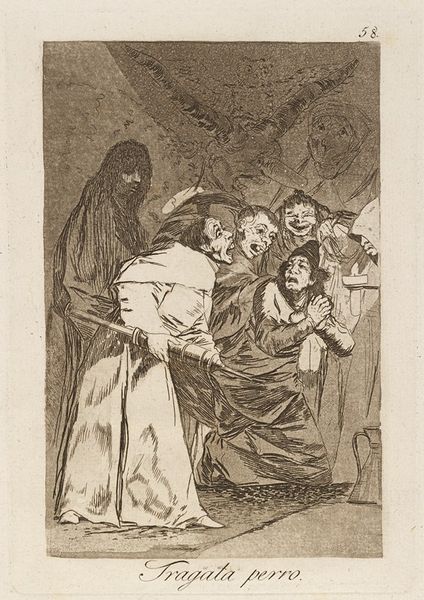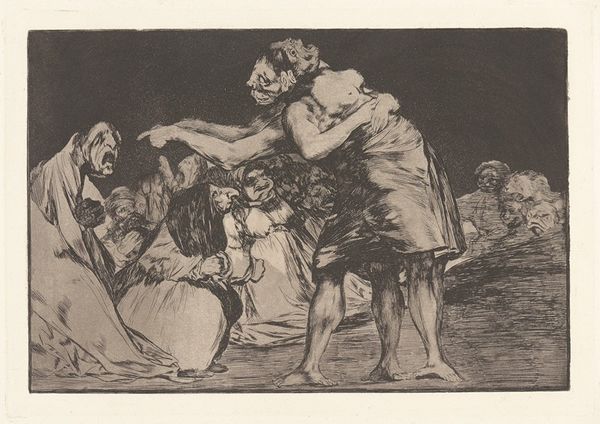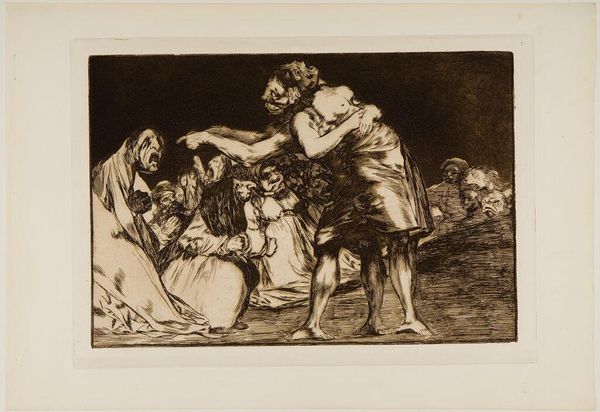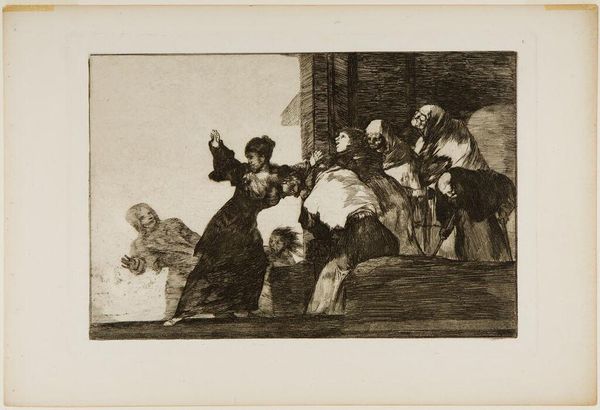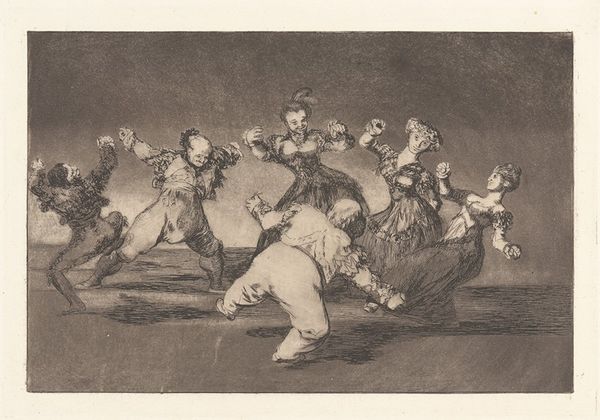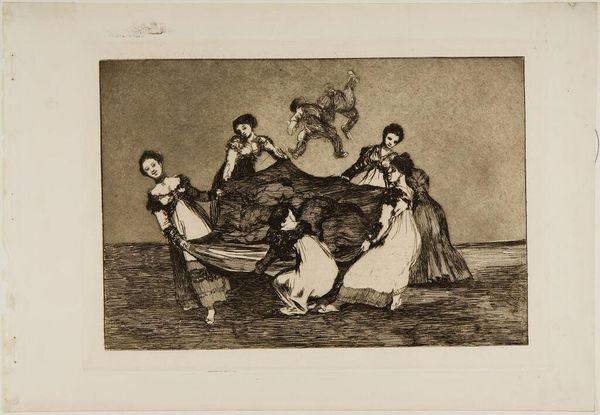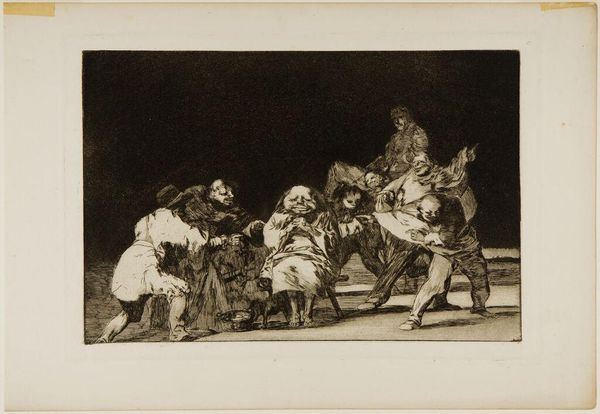
print, etching, intaglio
#
pencil drawn
#
narrative-art
# print
#
etching
#
intaglio
#
old engraving style
#
figuration
#
romanticism
#
history-painting
Copyright: Public Domain: Artvee
Curator: Welcome. Here we have Francisco de Goya's "Wounds Heal Quicker than Hasty Words," an intaglio print created sometime between 1813 and 1820. Editor: My first impression is of immense dread. The figures huddle together in this bleak, shadowy landscape... the scratchy lines seem to amplify their fear. Curator: Indeed. Goya used etching, a printmaking process where acid bites into a metal plate, allowing for that expressive line work. Note, too, the aquatint, which gives tonal variation and those grainy shadows... it evokes a world shrouded in ambiguity and horror. The materiality speaks to a world in turmoil, scarred just like the copperplate. Editor: For me, this work really encapsulates the psychological weight of words. The composition focuses the eye to the figure on the right; look at that accuser’s gesture. It feels like the verbal assault itself is a physical blow. Then you notice how some of the others seem spectral, almost lost in shadow, barely human... like mere phantoms in this narrative. Curator: The context is crucial here. This print belongs to Goya's "Disasters of War" series. Think of the social upheaval in Spain during the Napoleonic Wars. Goya, a court painter, witnessed the violence and famine firsthand. This piece is about the raw consequences of conflict and the material destruction. What of labor, in both image and process? Consider the manual skill etched on the printing plate, multiplied in production, distributed and consumed... What stories these material conditions transmit! Editor: Beyond its specific historical context, I think there’s also a timelessness here, unfortunately. It makes you wonder: How long have accusations served as weapons? Look at those faces – are they condemning, justifying, suffering? The meaning is far from singular. The title itself becomes darkly ironic when looking at their faces. Curator: The physical wounds of war may heal, but the social wounds, inflicted by rumour and blame, leave much deeper scars. One must consider how prints offered wider circulation of politically charged images, accessible to more than the traditional elite art consumers. The material facilitates dissemination of knowledge, for good and ill. Editor: Absolutely. I come back to this sensation of unease... even revulsion. The power of such symbolic imagery – Goya captures it masterfully. Curator: I appreciate how analyzing both its physical and cultural manufacture illuminates Goya’s sharp indictment of human cruelty. Editor: And I think we can all learn a lot from understanding the lasting impact of thoughtless cruelty, especially verbal. Thank you.
Comments
No comments
Be the first to comment and join the conversation on the ultimate creative platform.
